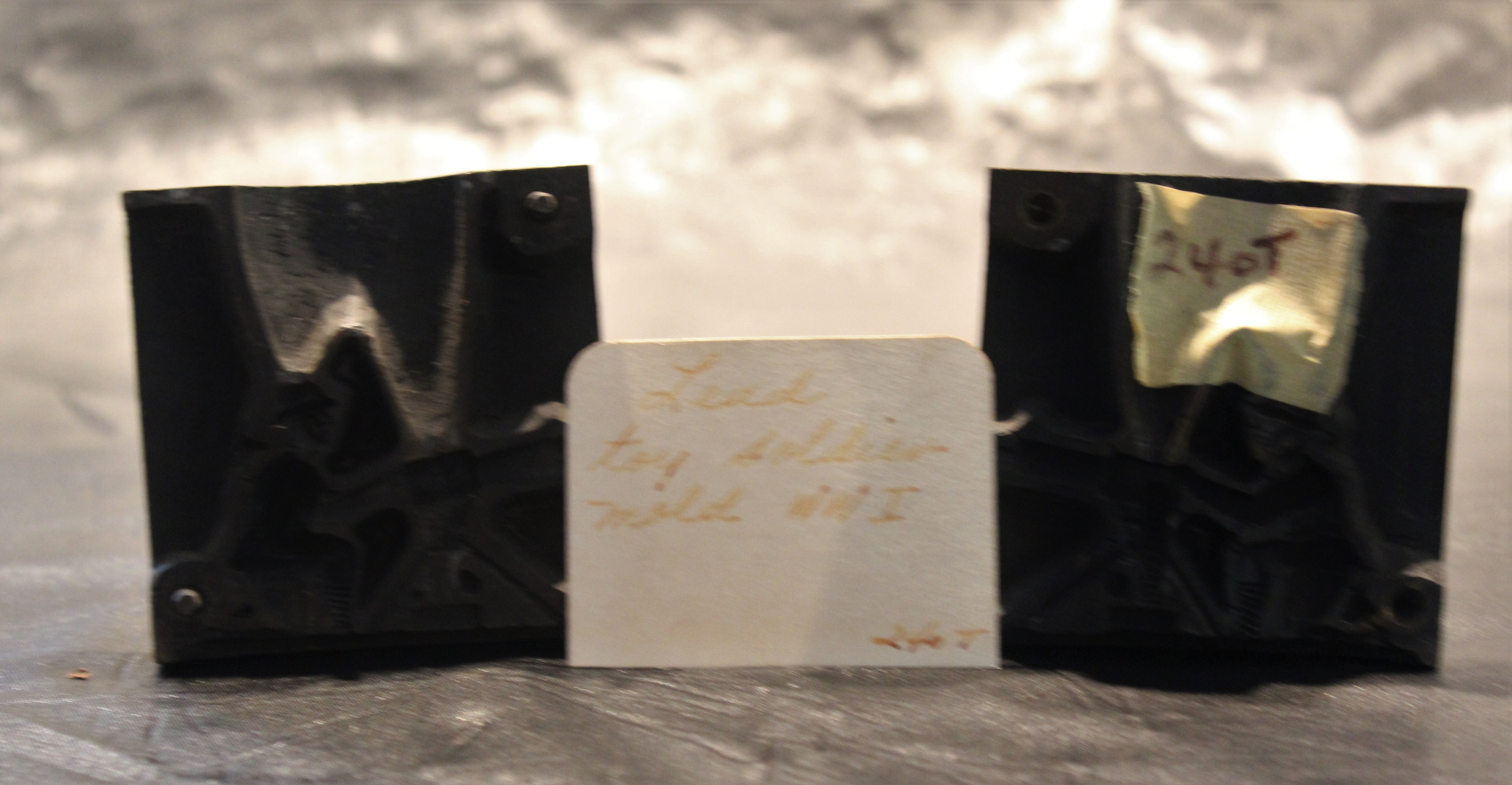Historic Tools of North Castle
WWI Toy Soldier Mold
This tool at Smith’s Tavern was a mold used to make a lead World War I toy soldier. It consisted of two pieces, both with rounded wooden handles attached to square cast-iron molds. When fitted together, there is a round hole for pouring in the melted lead.
Among the most strictly enforced consumer-protection laws are those banning lead in toys. Lead is an insidious poison: it's slow-acting and results not in immediately noticeable effects like rashes but in behavioral problems and a slightly lowered IQ. Even a very small amount of it is harmful. Yet a few decades ago, a lot of the most popular playthings were made from solid lead, including tin soldiers.
"Tin" is something of a misnomer, though. The soldiers were not made primarily of tin but of a lead-tin alloy containing 60 to 75 percent lead, with the rest being mostly tin and antimony. Sometimes they were cast from "hard lead," a group of alloys typically found in bullets, which contain nearly 95 percent lead with just a bit of antimony for hardness.
Children didn't just play with these little chunks of neurotoxin; they often cast them in their own kitchens, using kits that came with a melting pot, a ladle, some sticks of lead alloy and a selection of soldier molds. After casting, kids filed them smooth (spreading lead dust all around). Then they decorated their armies with a variety of paints, most of which were lead-based.
Reference: https://www.popsci.com/diy/article/2012-01/getting-lead-out2/
Catalog Items:
Item T240A&B
| Location: | Left Shelf - 3rd |
|---|---|
| Length: | 27 cm |
| Width: | 19 cm |
| Height: | 2 cm |
| Weight: | 553 g |


